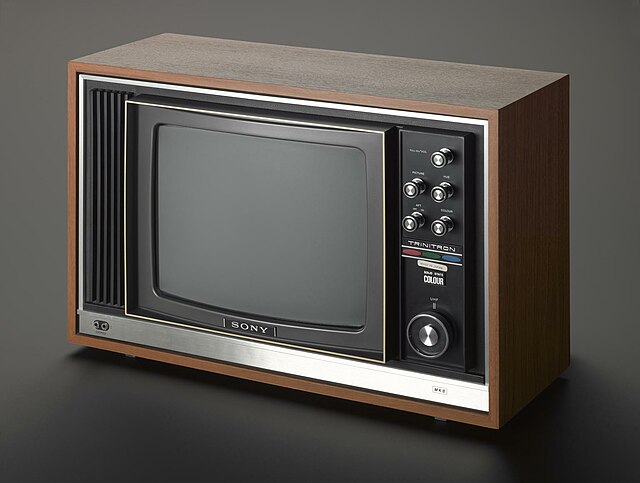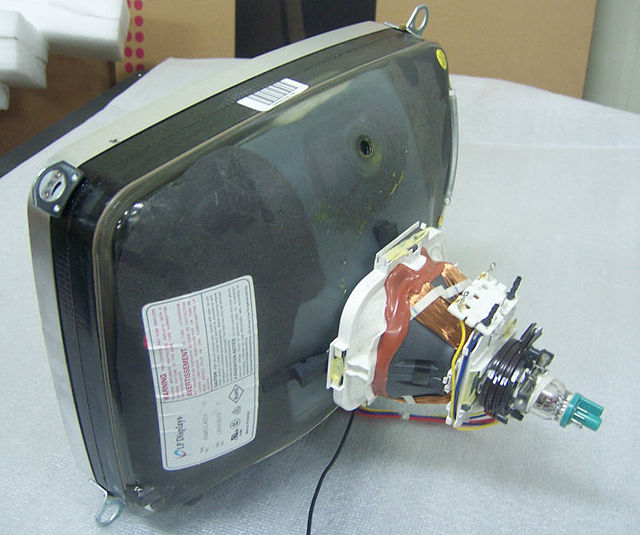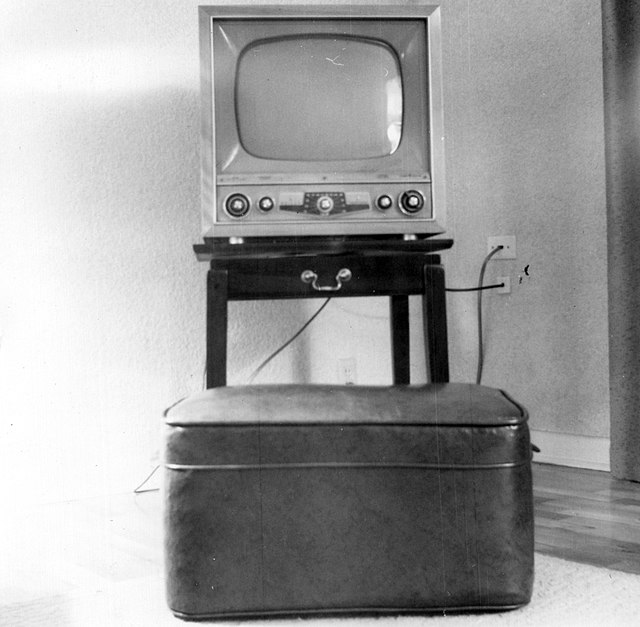Trinitron was Sony's brand name for its line of aperture-grille-based CRTs used in television sets and computer monitors, one of the first television systems to enter the market since the 1950s. Constant improvement in the basic technology and attention to overall quality allowed Sony to charge a premium for Trinitron devices into the 1990s.
Sony KV-1320UB Trinitron from 1969
Close-up of phosphor bars on a 14" Sony Trinitron television
A 1970s tabletop size Trinitron
Sony Chromatron
A cathode-ray tube (CRT) is a vacuum tube containing one or more electron guns, which emit electron beams that are manipulated to display images on a phosphorescent screen. The images may represent electrical waveforms on an oscilloscope, a frame of video on an analog television set (TV), digital raster graphics on a computer monitor, or other phenomena like radar targets. A CRT in a TV is commonly called a picture tube. CRTs have also been used as memory devices, in which case the screen is not intended to be visible to an observer. The term cathode ray was used to describe electron beams when they were first discovered, before it was understood that what was emitted from the cathode was a beam of electrons.
Oscilloscope cathode-ray tube
The rear of an LG.Philips Displays 14-inch color cathode-ray tube showing its deflection coils and electron guns
Typical 1950s United States monochrome CRT TV
Snapshot of a CRT TV showing the line of light being drawn from left to right in a raster pattern








